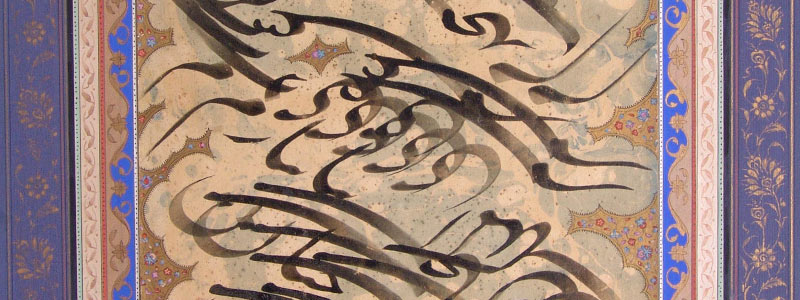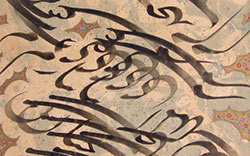Mir Hosayn was born in the first half of the nineteenth century in Tehran. During his childhood he began practicing calligraphy with his father, Sayyed ‘Ali Hakkāk Tehrani, who was an artist.
In 1861 CE, Nāser-al-Din Shāh (r. 1848-1896) appointed his son Mozaffar-al-Din Shāh the Crown Prince and sent him to Tabriz. Mir Hosayn accompanied the prince to Tabriz as his teacher, bearing the title ‘The Calligrapher.’ His extended, mandatory residence in Tabriz (a Turkish-speaking region in Iran) resulted in some referring to him as ‘Mir Hosayn the Turk.’ In addition to the Crown Prince, he taught a number of other students such as Yusof, ‘Ali Mohammad, and Mahdi Khān.
Mir Hosayn did not show much interest in the more traditional forms of the Nasta‘liq script, such as chalipā and scribing (ketābat), and instead dedicated himself to writing Siyāh Mashq, which is the most varied form of artistic expression in calligraphy. For this, he is considered one of the most innovative and pioneering artists of Iran in the modern era. Though few of his works survive, his Siyāh Mashq (which number in the double digits) is evidence that he possessed a truly extraordinary eye for composition.
Mir Hosayn died in 1883 CE in Tabriz.




